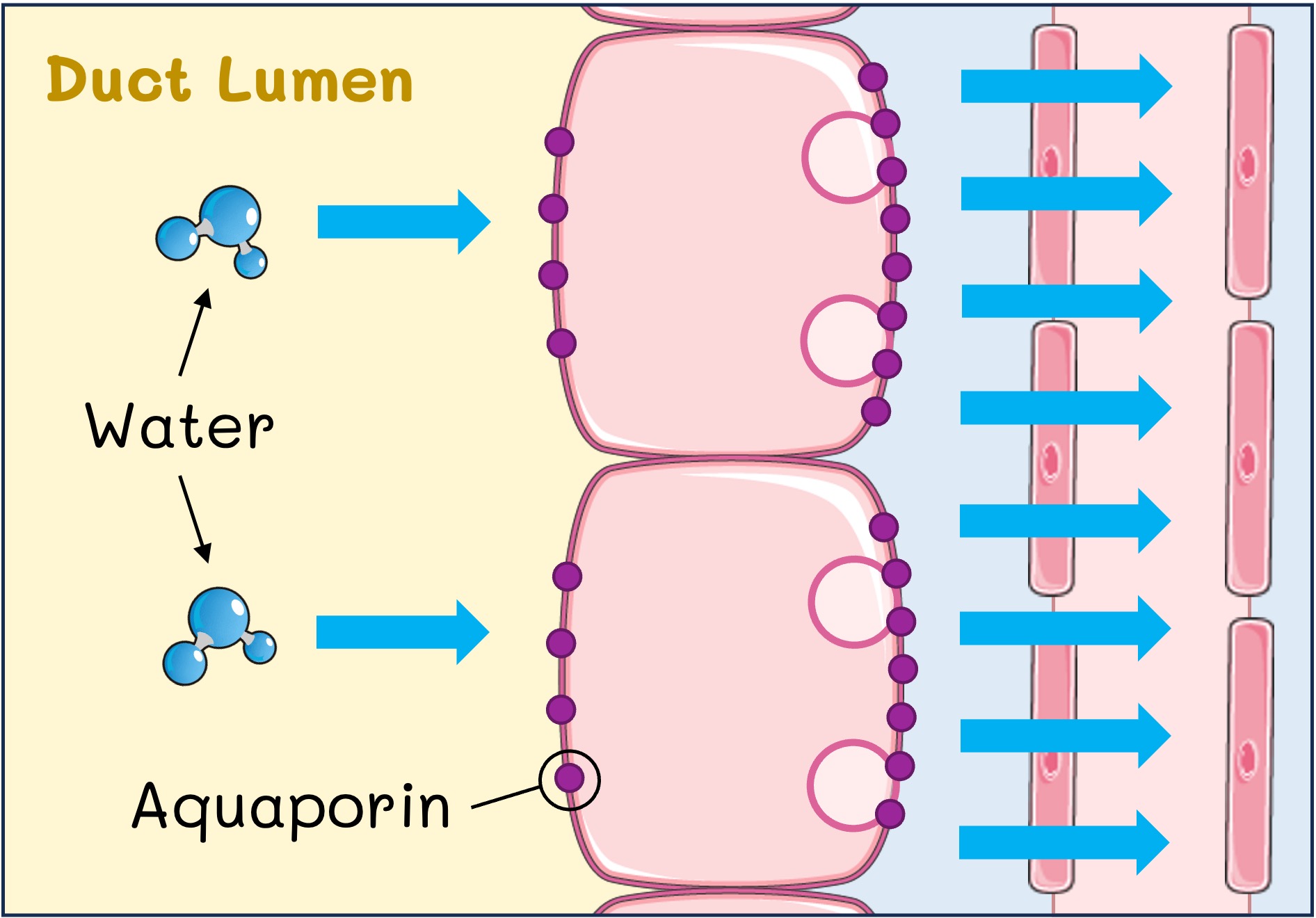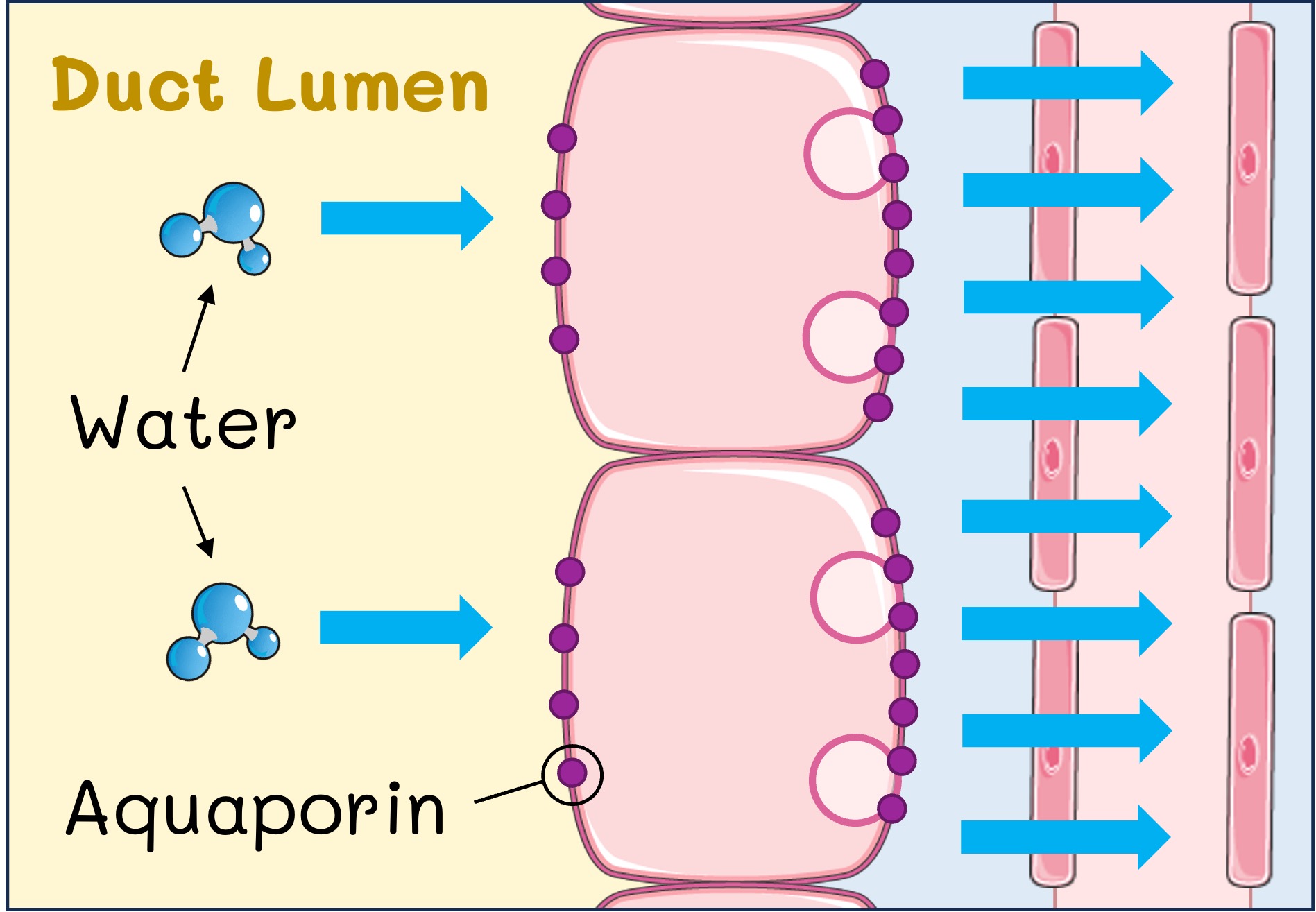

Osmoregulation
Osmoregulation is the control of the water balance of the blood, tissue or cytoplasm of a living organism
-
It occurs within the loop of Henle, which is the part of a nephron that descends into the medulla
Establishing a Salt Gradient
The function of the loop of Henle is to create a high solute (hypertonic) concentration in the tissue fluid of the medulla
-
The descending limb of the loop of Henle is permeable to water but not salts (water will leave the filtrate via osmosis)
-
The ascending limb of the loop of Henle is permeable to salts but not water (sodium ions are actively transported out of the filtrate)
-
This means that as the loop descends into the medulla, the interstitial fluid becomes more salty and hypertonic (has a higher osmotic concentration)
Additionally, the vasa recta blood network that surrounds the loop of Henle flows in the opposite direction to the filtrate (counter-current)
-
This means that salts released from the ascending limb are drawn down into the medulla, further establishing a salt gradient
Medullary Salt Gradient
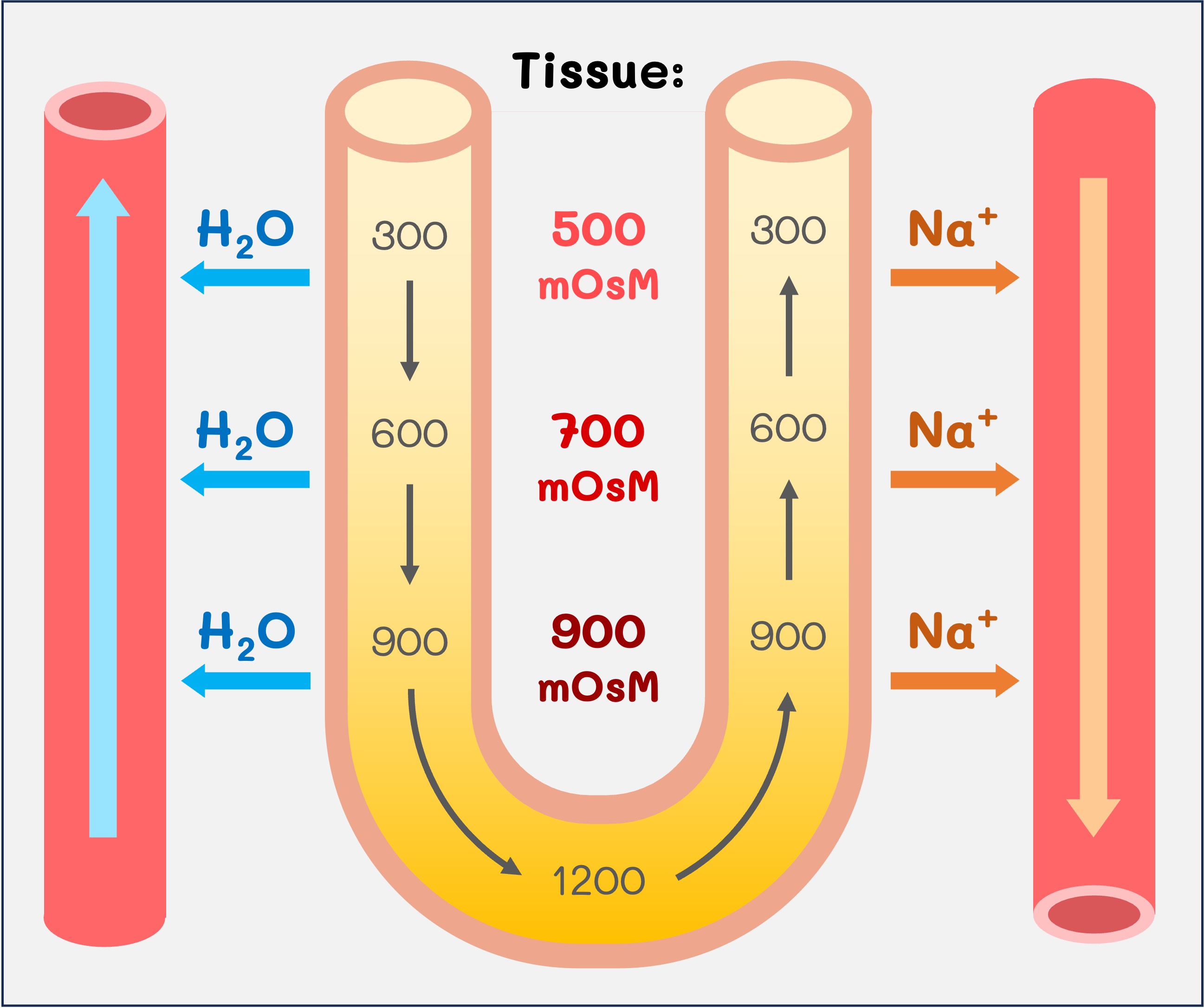
Osmoregulation
Once the filtrate has passed through the distal convoluted tubule, it drains into a collecting duct
-
As the collecting duct passes through the medulla, the hypertonic conditions of the medulla will draw water out by osmosis
-
The amount of water released from the collecting ducts to be retained by the body is controlled by anti-diuretic hormone (ADH)
ADH is released from the posterior pituitary in response to dehydration (detected by osmoreceptors in the hypothalamus)
-
ADH increases the permeability of the collecting duct to water, by causing vesicles containing aquaporins to fuse with the membrane of the cells lining the duct
-
This increases the amount of aquaporins lining the collecting duct, meaning more water is reabsorbed into the bloodstream
-
This means less water remains in the filtrate, urine becomes concentrated and the individual urinates less (i.e. anti-diuresis)
-
When an individual is suitably hydrated, ADH levels decrease and less water is reabsorbed (resulting in more dilute urine)
-
Remember: ADH is produced when you Are DeHydrated
-
Water Reabsorption
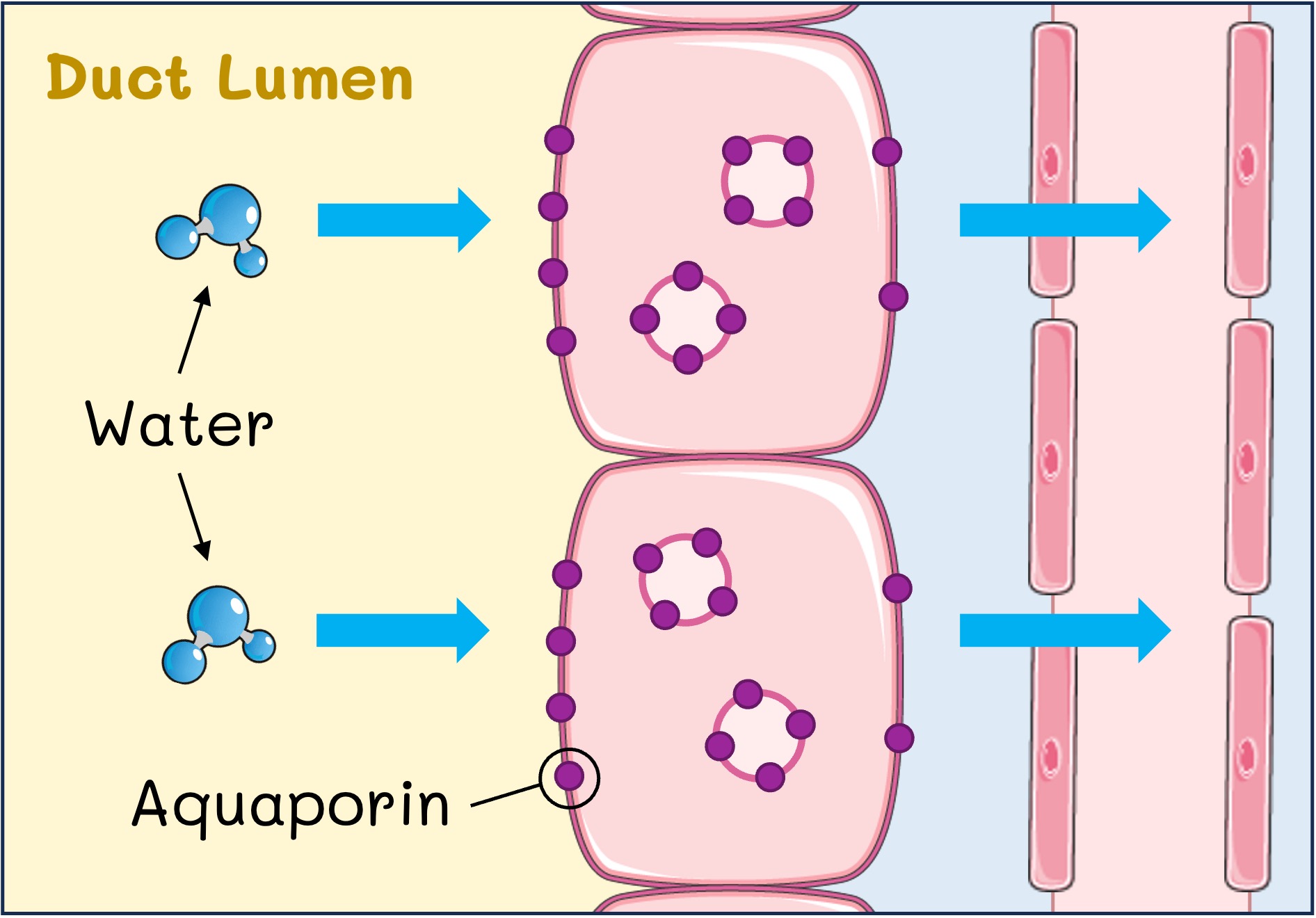
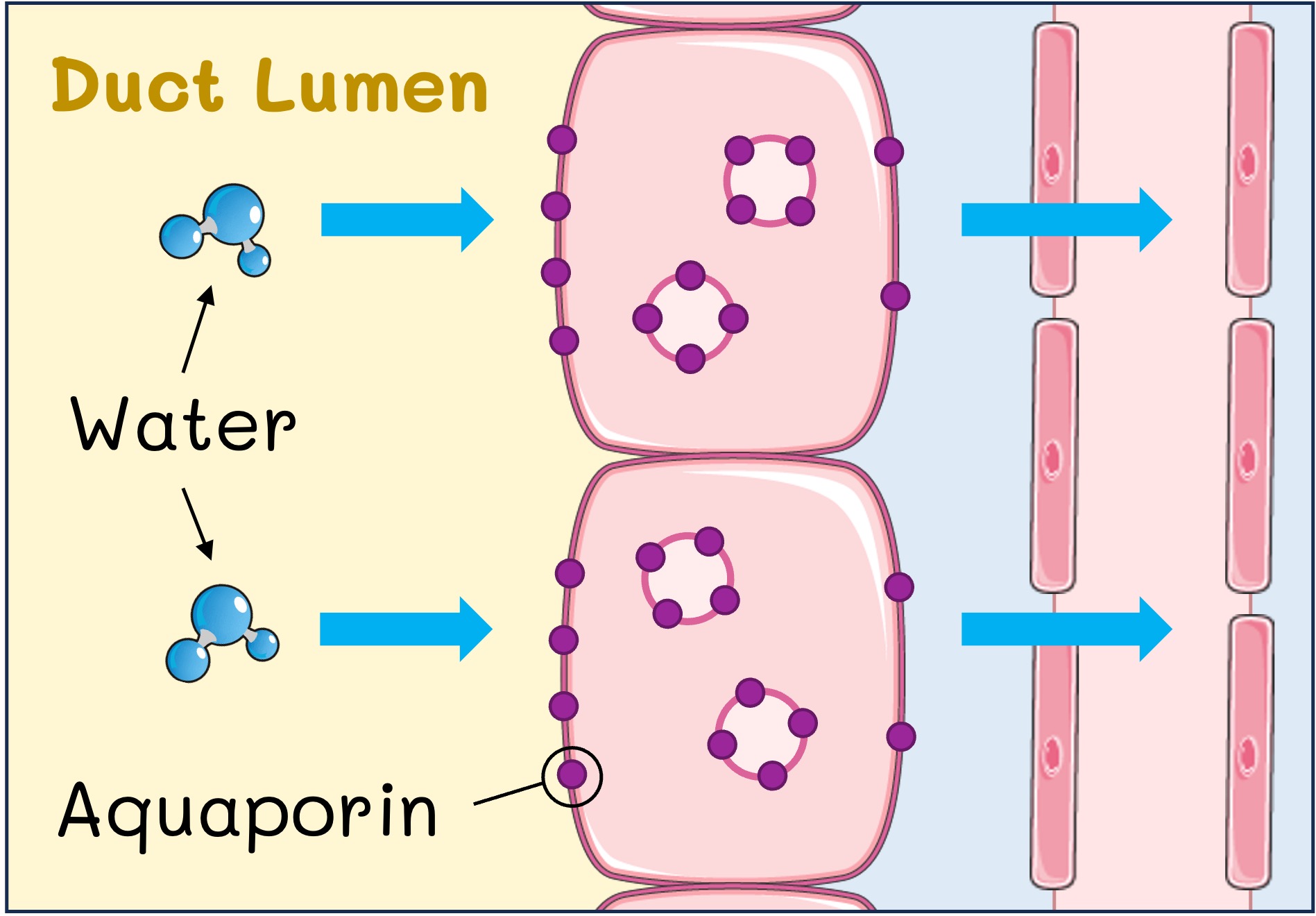
Low ADH
